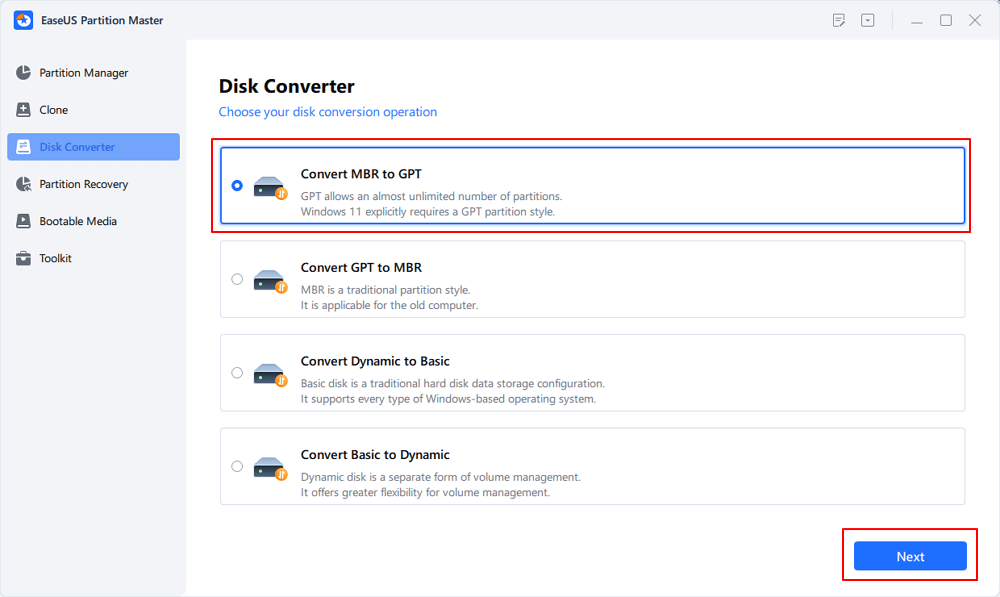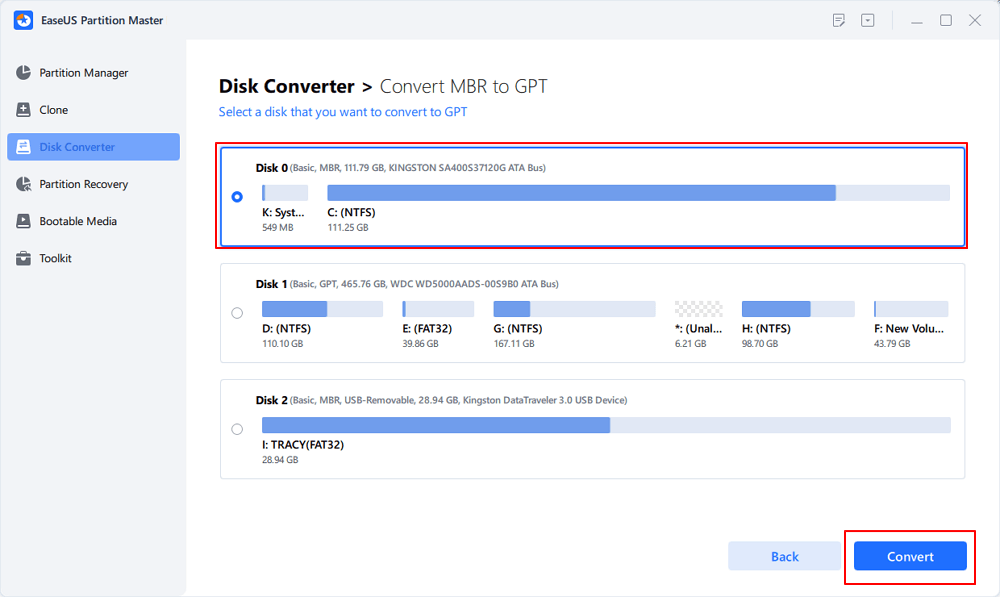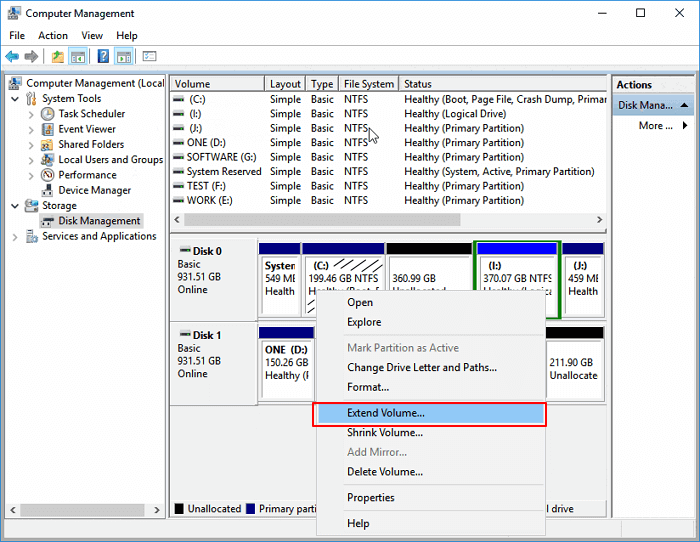Page Table of Contents
About the Author
Hot Topics
Updated on Oct 29, 2024
Overview of fixing SSD not showing full capacity:
| ⚙️Complex Level | Low, Beginners |
| ⏱️Duration | 5-10 minutes |
| 💻Applies to | Windows 11/10/8/8.1/7/XP/Vista |
| ✏️Ways | |
| 🔨Tools | Windows PC, EaseUS Partition Master, Command Prompt, File Explorer |
Is your SSD showing less capacity? Are you having issues with storing all your files? If that's the problem you're facing, then you're at the right place. SSDs have become essential components for all modern-day PCs for their fast performance. However, they can have issues if they're not formatted correctly.
This article from EaseUS will help you fix the SSD not displaying the full capacity error and ensure your drive works without issues. You can also optimize your new SSD drive for the best performance and reliability.
Just follow the three fixes below and use your SSD without issues. So, what are you waiting for? Dive in, and let's get started.
How to Fix SSD Not Showing Full Capacity - 3 Safe Ways
While fixing the SSD not showing full capacity error looks easy to solve, it isn't. However, if you use the fixes listed below and follow them step-by-step, you can fix your SSD without running into issues.
Way 1. Convert MBR to GPT
Converting your SSD from MBR to GPT partition format is a common way of showing its full capacity. However, the conversion process can get challenging and is not beginner-friendly. Not to mention, all your data on the drive would be formatted.
You can choose a third-party tool like EaseUS Partition Master and change the MBR partition system to GPT on your SSD. In addition, the app has a convert MBR to GPT feature to help you convert without data loss.
Follow the tutorial below to change the format from MBR to GPT using EaseUS Partition Master:
Step 1. Download and launch EaseUS Partition Master on your computer.
Step 2. Go to Disk Converter, select "MBR => GPT" and click "Next" to continue.

Step 3. Select the target MBR disk that you tend to convert to GPT, and click "Convert" to start the conversion.

Once you convert MBR to GPT, you can also use EaseUS Partition Master to manage your SSD. Here are some features that may help you:
- Merge different SSD partitions without losing data
- Create and delete new or existing partitions
- Rebuild MBR
- Optimize performance by SSD 4K aligning
- Hide and unhide disk partitions
- Resize partitions
- Merge partitions on SSD
However, that's not all; you get other benefits with EaseUS Partition Master. Just download EaseUS Partition Master and try the app for free.
Way 2. Reset the Virtual Memory Paging File
Resetting the Virtual Memory paging file can also help fix the SSD not showing full capacity error. This works by changing the overall size of the virtual memory that Windows uses and offers you the true capacity of your SSD.
To reset Virtual Memory on Windows, follow the steps below:
Step 1. Hit the "Windows + X" keys and select the "Terminal (Admin)" option.
Step 2. Now type the following commands to check the current virtual memory page file.
- wmic pagefile list /format:list

Step 3. Now type the command below to switch from Windows automatically managing the paging file to the custom manage option.
- wmic computersystem where name="%computername%" set AutomaticManagedPagefile=false
Step 4. Type the following command to change the virtual memory page size. This will help you get more storage space from your SSD.
- wmic pagefileset where name="C:\\pagefile.sys" set InitialSize=X,MaximumSize=X

💡Note: Change the "X" to the desired size for the paging file. For example, set InitialSize=1024, MaximumSize=10240.
Step 5. Finally, restart your PC to let the changes take effect.
You may also like:
Way 3. Make Conversion Between Vendor and OS Capacity Calculating
Your SSD can be the wrong size due to the difference between the capacity calculated by the vendor and the Windows OS. For example, the 120GB SSD you bought might be listed as only 112GB on Windows.
To find the actual size of your drive, you need to convert between the different notations. Then, you can check the capacity of your SSD using File Explorer.
Follow the steps below to do so:
Step 1. Open File Explorer and right-click the target drive you to check.
Step 2. Click on the "Properties" option.

Step 3. You can now see the actual capacity of your SSD in bytes and GB.
Read Also: Hard Drive Showing Wrong Capacity
Windows calculates the size of your SSD using the binary system, which uses the two numeric values 0 and 1.
To simplify, it means that 1024MB equals 1GB and 1024GB equals 1TB. In contrast, your SSD vendor may use the decimal system for their notation. This means 1KB equals 1,000 bytes, and 1MB to 1,000KB.
So, your 120GB SSD equals 120,000MB, according to the vendor, but Windows will calculate it as 120,000MB SSD equals 117.18GB. The following is the cause of this error. Continue to read and share this article to let others know about that.
Why Is SSD Not Showing Full Capacity
There can be multiple reasons why your SSD is not showing full capacity. However, some of the most common of them are:
The SSD is larger than 2TB but initialized to be MBR. MBR is an older partitioning system limited to only 2TB of space. This means your drive won't be able to use its full capacity if the storage space is more than 2TB. To use all the space present on your SSD, you would need to convert it to the GPT standard. The GPT system doesn't have a limitation of 2TB and is better for future-proofing your system.
- Notice:
- Converting your drive from MBT to GPT will format and delete all data. Hence, back up your important data before you start the conversion process.
The vendor's capacity calculation is different. Vendors usually use the decimal notation, where 1 KB equals 1000 bytes. However, computers use binary notation, where 1 KB equals 1024 bytes. The difference in counting methods can lead to a discrepancy between the advertised capacity and the capacity reported by your PC.
The Virtual Memory paging file is located on the SSD. When using your SSD as the system drive, the system tends to reserve additional space for the Virtual Memory paging file (swap file). This file expands your PC's RAM using the SSD's storage capacity. So, the file can take up quite a bit of space, especially for systems with a low amount of physical memory.
Your SSD drive can also face other issues that are less likely to occur, and they are:
- Unallocated Space
- Over-Provisioning
- Hidden Partitions
- OS and File System Overhead
- Partition issues while cloning
You can learn form the link below that why your SSD is not showing the full capacity after clone.
Solved: SSD Not Showing Full Capacity After Clone
So, if you got a new SSD and are having issues showing total capacity after cloning your hard drive, follow the fixes below.

Conclusion
This guide offers three easy and safe ways to fix the SSD not showing the full capacity issue. Hence, select the way that suits your needs. However, the most common fix is the MBR to GPT conversion.
I recommend using the EaseUS Partition Master tool to convert your SSD from MBR to GPT. This is necessary for any drive above 2TB as MBR is incompatible with them. You can download the tool from EaseUS's official site and fix the SSD not showing full capacity error.
SSD Not Showing Full Capacity FAQs
I hope the fixes above have helped you solve your SSD problems. However, if you still have doubts, follow the FAQs below.
1. Why is my 1TB SSD only 930 GB on my PC?
The apparent missing space on your SSD is due to how drive manufacturers and computer systems compute storage space. This means that your SSD vendor measures a KB as 1,000 bytes, and your PC measures a KB as 1,024 bytes.
So, when you buy a 1TB SSD, you're only getting 1,000,000,000,000 bytes but your PC measures this as around 931GB. The system might reserve the other 1 GB, and that's why you only see 930GB of available space.
2. Why is my external hard drive not showing full capacity?
There might be several reasons your external hard drive is not showing full capacity. The most common reasons are:
- The drive is above 2TB and uses the MBR partitioning system and not GPT
- Your OS has made a Virtual Memory paging file
- The vendor and OS calculations are different.
3. Why is my 3TB hard drive showing 2TB?
If your 3TB hard drive is only showing 2TB, the issue could be caused due to the following reasons:
- Your hard drive is initialized as MBR
- Traditional BIOS systems don't support GPT partitions and are limited to 2.2TB
- Some older operating systems may not support hard drives larger than 2TB
4. How to fix the SSD only showing 1GB error?
If your SSD only shows 1GB when it should be showing significantly more, it could be due to several reasons. Your SSD might be incorrectly formatted or have a potential issue with the firmware. Here are some ways to fix the SSD only showing 1GB error:
- 1. Reformat your SSD
- 2. Update your SSD's firmware
- 3. Use SSD manufacturer's tools
- 4. Check for unallocated space
- 5. Contact customer support
How Can We Help You
About the Author
Roxanne is one of the main contributors to EaseUS and has created over 200 posts that help users solve multiple issues and failures on digital devices like PCs, Mobile phones, tablets, and Macs. She loves to share ideas with people of the same interests.
Sherly joined EaseUS in 2022 and she has always loved writing articles and enjoys the fun they bring. She receives professional training here, focusing on product performance and other relative knowledge. She has written over 200 articles to help people overcome computing issues.
Product Reviews
-
I love that the changes you make with EaseUS Partition Master Free aren't immediately applied to the disks. It makes it way easier to play out what will happen after you've made all the changes. I also think the overall look and feel of EaseUS Partition Master Free makes whatever you're doing with your computer's partitions easy.
Read More -
Partition Master Free can Resize, Move, Merge, Migrate, and Copy disks or partitions; convert to local, change label, defragment, check and explore partition; and much more. A premium upgrade adds free tech support and the ability to resize dynamic volumes.
Read More -
It won't hot image your drives or align them, but since it's coupled with a partition manager, it allows you do perform many tasks at once, instead of just cloning drives. You can move partitions around, resize them, defragment, and more, along with the other tools you'd expect from a cloning tool.
Read More
Related Articles
-
How to Fix Hard Drive Won't Boot [Top 6 Fixes🏅]
![author icon]() Roxanne/2024/10/14
Roxanne/2024/10/14 -
What Is Dell Default Admin Password & How to Reset It
![author icon]() Cici/2024/10/17
Cici/2024/10/17 -
Tools to Run Toshiba Hard Drive Test - Health & Speed 2024
![author icon]() Sherly/2024/07/18
Sherly/2024/07/18 -
Can I Format USB Drive From exFAT to FAT32? - YES!
![author icon]() Oliver/2024/09/24
Oliver/2024/09/24
Hot Topics in 2024
EaseUS Partition Master

Manage partitions and optimize disks efficiently








